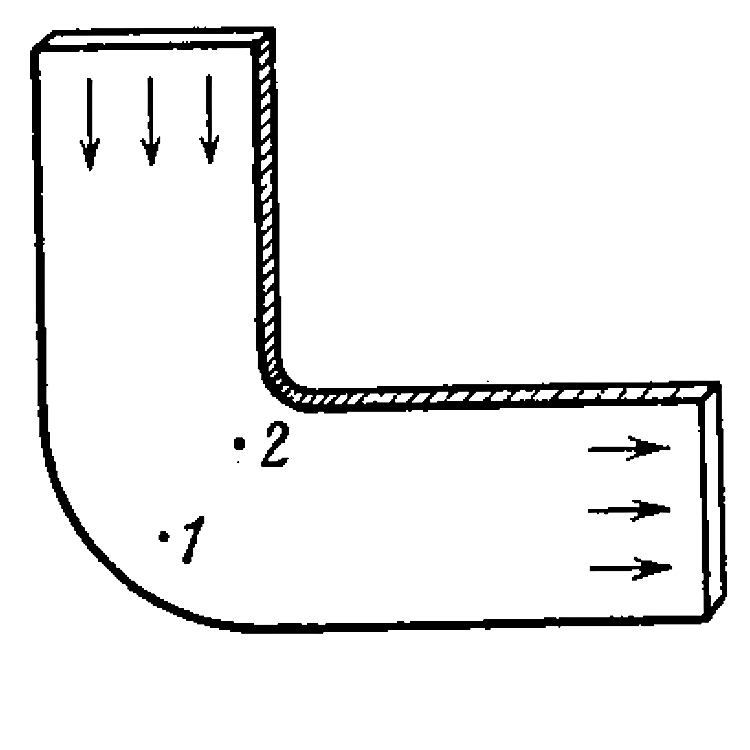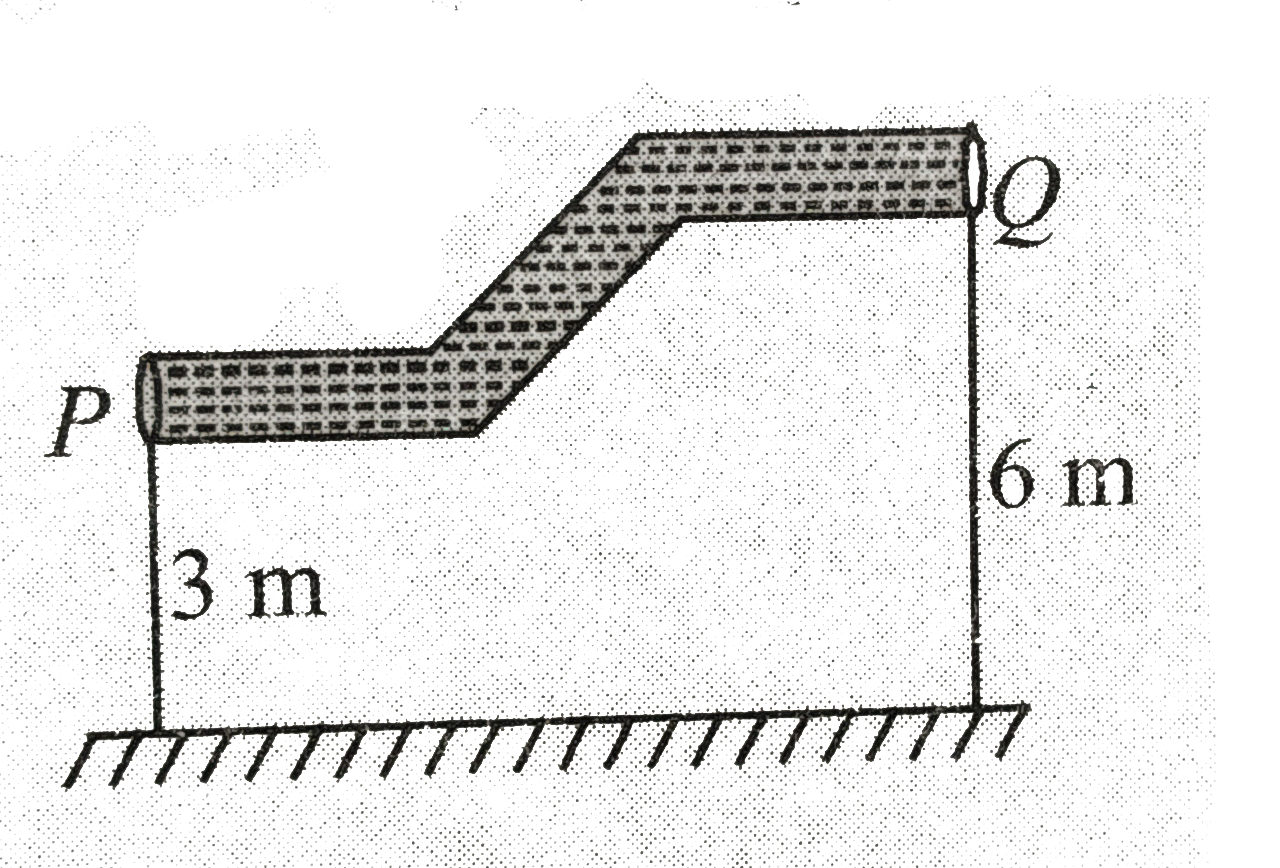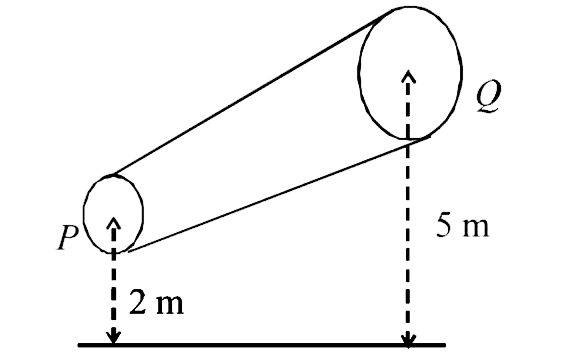Fluid Flows
NA
Similar Questions
An ideal fluid flows through a pipe of circular cross section of radius r at a speed v0. Now a viscous liquid is made to flow through the pipe at the same volume flow rate (measured in m3s–1). Find the maximum speed of a fluid particle in the pipe.
View SolutionIdeal fluid flows along a flat tube of constant cross-section, located in a horizontal plane and bent as shown in figure. (top view). The flow is steady. Are the presssures and velocities of the fluid equal at points 1 and 2? What is the shape of the streamlines?

View Solution
Knowledge Check
An incompressible fluid flows steadily through a cylindrical pipe which has radius 2 R at point A and radius R at point B farther along the flow direction. If the velocity at point A is v, its velocity at point B is
AV2B4VC2VDVAssertion : When an ideal fluid flows through a pipe of non-uniform cross-section, then pressure is more at that section where area is more if the pipe is horizontal.
Reason : According to Bernoulli's theorem speed at broader cross-section will be less.AIf both Assertion and Reason are correct and Reason is the correct explanation of Assertion.BIf both Assertion and Reason are true but Reason is not the correct explanation of Assertion.CIf Assertion is true but Reason is false.DIf Assertion is false but Reason is true.An unsymmetrical sprinkler the top view of the setup has frictionless shaft and equal fluid flows through each nozzle with a velocity of 10 m/sec relative to nozzle. If the shaft is rotating at constant angular speed then its angular speed of rotation is :
 A3 rad/sB4 rad/sC2 rad/sD10 rad/s
A3 rad/sB4 rad/sC2 rad/sD10 rad/s
The loss of pressure when a fluid flows through a pipe is give by P=kρalVbdcμ where d and l are diameter and length of the pipe respectively, ρ,d and μ are the mass, density and coefficient of viscosity of the fluid, V is the mean velocity of flow through the pipe and k is a numerical constant. Find the values of a, b and c.
View SolutionA non-viscous liquid of constant density 500kg/m3 flows in a variable cross-sectional tube. The area of cross section of the tube at two points P and Q at heights of 3m and 6m are 2×10−3m3 and 4×10−3m3, respectively. Find the work done per unit volume by the forces of gravity as the fluid flows from point P to Q.

View SolutionA non-viscous liquid of constant density 1000kg/m3 flows in a streamline motion along a tube of variable cross section. The tube is kept inclined in the vertical plane as shown in Figure. The area of cross section of the tube two point P and Q at heights of 2 metres and 5 metres are respectively 4×10−3m2 and 8×10−3m2. The velocity of the liquid at point P is 1m/s. Find the work done per unit volume by the pressure and the gravity forces as the fluid flows from point P to Q.

View SolutionThe Reynold's number for fluid flow in a pipe is independent of
View SolutionAn application of Bernoulli's equation for fluid flow is found in :
View Solution
